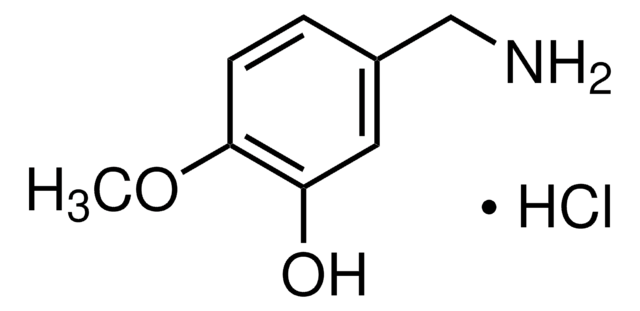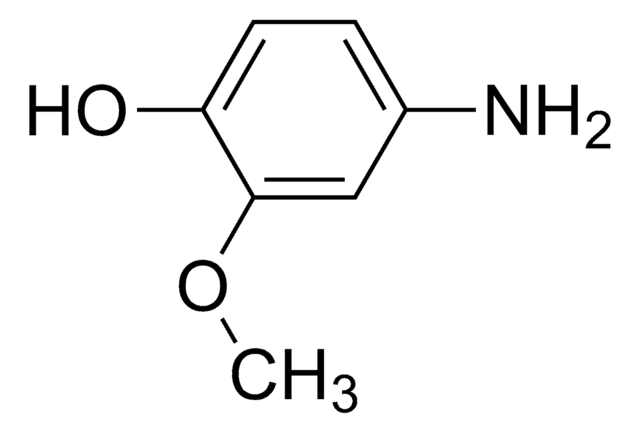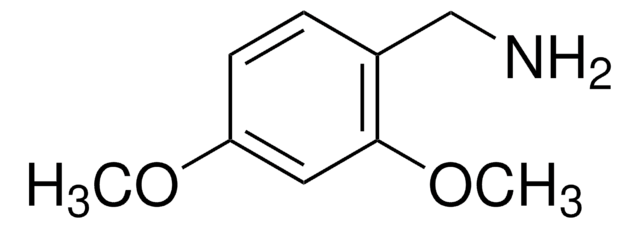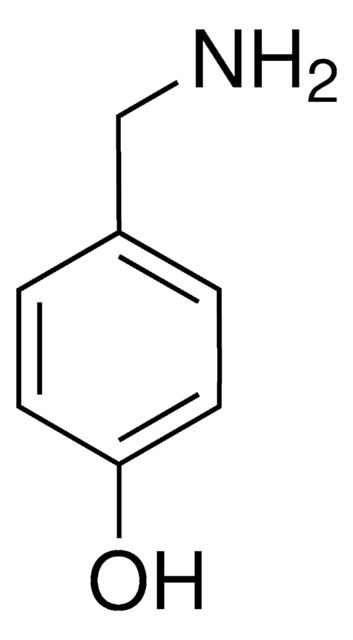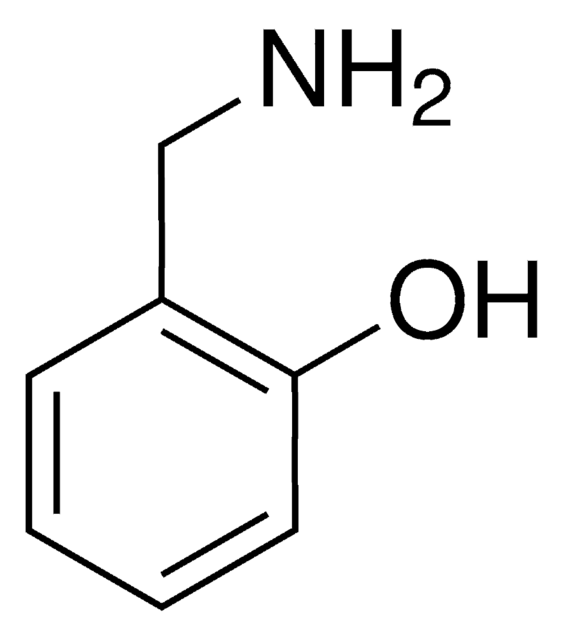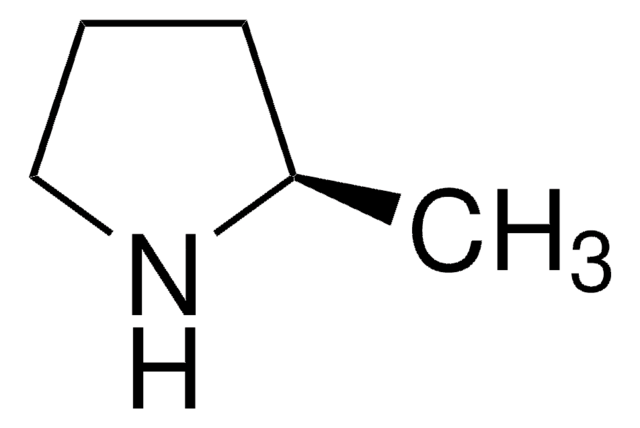Wszystkie zdjęcia(1)
Key Documents
H36605
4-Hydroxy-3-methoxybenzylamine hydrochloride
98%
Synonim(y):
Vanillylamine hydrochloride
Zaloguj sięWyświetlanie cen organizacyjnych i kontraktowych
About This Item
Wzór liniowy:
HOC6H3(OCH3)CH2NH2 · HCl
Numer CAS:
Masa cząsteczkowa:
189.64
Numer WE:
Numer MDL:
Kod UNSPSC:
12352100
Identyfikator substancji w PubChem:
NACRES:
NA.22
Polecane produkty
Próba
98%
mp
219-221 °C (dec.) (lit.)
ciąg SMILES
Cl.COc1cc(CN)ccc1O
InChI
1S/C8H11NO2.ClH/c1-11-8-4-6(5-9)2-3-7(8)10;/h2-4,10H,5,9H2,1H3;1H
Klucz InChI
PUDMGOSXPCMUJZ-UHFFFAOYSA-N
Hasło ostrzegawcze
Warning
Zwroty wskazujące rodzaj zagrożenia
Zwroty wskazujące środki ostrożności
Klasyfikacja zagrożeń
Eye Irrit. 2 - Skin Irrit. 2
Kod klasy składowania
11 - Combustible Solids
Klasa zagrożenia wodnego (WGK)
WGK 3
Temperatura zapłonu (°F)
Not applicable
Temperatura zapłonu (°C)
Not applicable
Środki ochrony indywidualnej
dust mask type N95 (US), Eyeshields, Gloves
Wybierz jedną z najnowszych wersji:
Masz już ten produkt?
Dokumenty związane z niedawno zakupionymi produktami zostały zamieszczone w Bibliotece dokumentów.
Klienci oglądali również te produkty
Harishchandra B Gururaj et al.
Plant science : an international journal of experimental plant biology, 195, 96-105 (2012-08-28)
Capsaicinoid biosynthesis involves the participation of two substrates viz. vanillylamine and C(9)-C(11) fatty acid moieties. Vanillylamine which is a derivative of vanillin is synthesized through a transaminase reaction in the phenylpropanoid pathway of capsaicinoid synthesis. Here we report the functional
Bellur Chayapathy Narasimha Prasad et al.
Journal of agricultural and food chemistry, 54(18), 6660-6666 (2006-08-31)
Capsaicin, a pungency factor alkaloid of Capsicum fruits, is biosynthesized by enzymatic condensation of vanillylamine, a phenyl propanoid intermediate, and 8-methyl-nonenoic acid, a fatty acid derivative from the leucine/valine pathway by capsaicin synthase. Biotic elicitors, such as aqueous mycelial extracts
Suvi F Flagan et al.
Environmental microbiology, 8(3), 560-565 (2006-02-16)
Capsaicin contributes to the organoleptic attributes of hot peppers. Here, we show that capsaicin is utilized as a growth nutrient by certain bacteria. Enrichment cultures utilizing capsaicin were successfully initiated using Capsicum-derived plant material or leaves of tomato (a related
Yaqin Lang et al.
The Plant journal : for cell and molecular biology, 59(6), 953-961 (2009-05-29)
Capsaicinoids are responsible for the spicy flavor of pungent peppers (Capsicum). The cultivar CH-19 Sweet is a non-pungent pepper mutant derived from a pungent pepper strain, Capsicum annuum CH-19. CH-19 Sweet biosynthesizes capsaicinoid analogs, capsinoids. We determined the genetic and
Kenji Kobata et al.
Bioscience, biotechnology, and biochemistry, 75(8), 1611-1614 (2011-08-09)
Stable isotope-labeled precursors were synthesized for an analysis by liquid chromatography-tandem mass spectrometry (LC-MS/MS) to elucidate the biosynthetic flow of capsaicinoids, capsinoids, and capsiconinoids. [1'-(13)C][5-(2)H]-Vanillin was prepared by the condensation of guaiacol with [(13)C]-chloroform and a D(2)O treatment. Labeled vanillylamine
Nasz zespół naukowców ma doświadczenie we wszystkich obszarach badań, w tym w naukach przyrodniczych, materiałoznawstwie, syntezie chemicznej, chromatografii, analityce i wielu innych dziedzinach.
Skontaktuj się z zespołem ds. pomocy technicznej